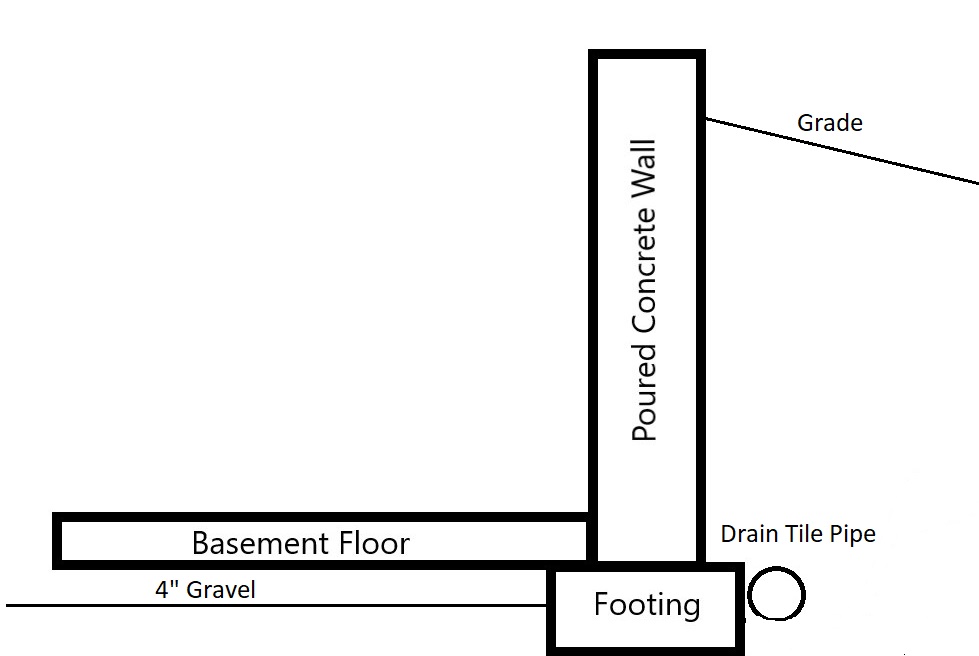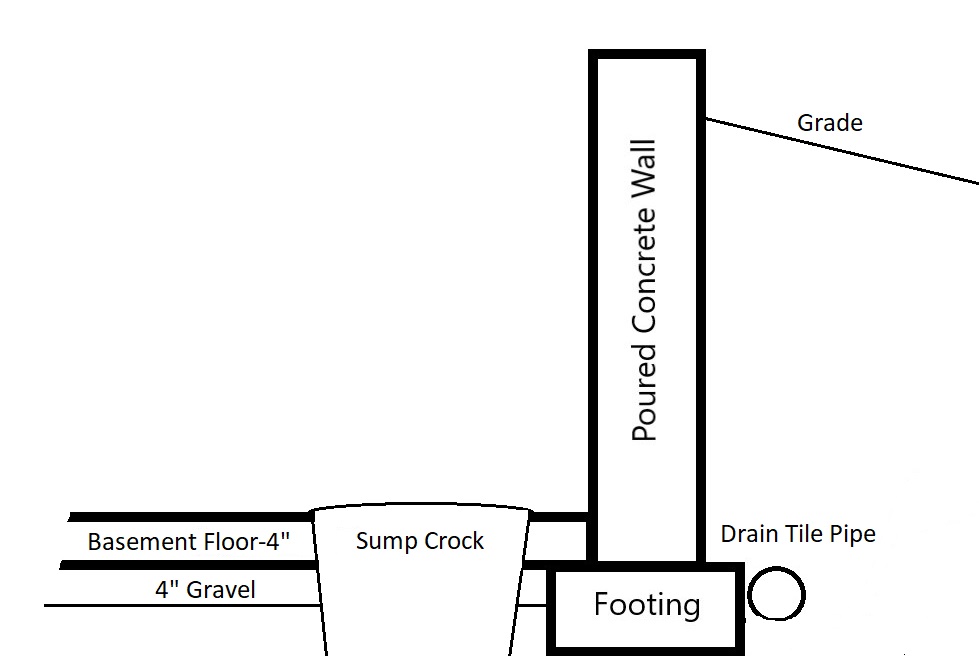Reader Question: How to Add Second Sump Crock to Basement
0 Comments | Posted by armchairbuilder in Owner-Builder

July 22, 2020
We get a fair amount of questions from our readers on how to build or repair their homes. As always, we are happy to provide answers whenever we can. Our latest question comes from Salvadore in Illinois. He didn’t say so much, but we assume he is having ground water show up in the basement on and around the floor. Here is his question.
” I want to build another sump pump & pit in my basement in another corner from my existing pump. If I dig & install a brand new basin in one corner of my basement floor, how do I reach drain tile outside in the order to catch under ground water? “
Adding a second sump crock and pump can be a great way to solve a ground water issue in an existing basement. In some cases, a sanitary sewer service line coming from the street to the house can bring storm water surcharge back to the house through the trench. In this case, a new sump crock located near the entrance of this sewer line into the basement can help alleviate this problem.
In some cases, the ground water table rises so high during storm events (or in spring) that a second sump crock is warranted to provide extra capacity. It’s also good to have a little redundancy to the system…meaning, two pumps are better than one in case one dies…and they eventually will.
Before we answer his question, lets take a look at the anatomy of the typical basement.

Here’s a look at the typical basement if you were to cut the home in half. The 4 inch thick concrete basement floor sits on top of the footing and on top of 4 inches of gravel. The drain tile pipe runs around the exterior perimeter of the basement just alongside the footing. This pipe collects the water on the outside of the wall and then comes through the footing and into the sump crock.

The image above shows the sump crock added in a new location. If we add the sump crock by cutting an opening in the existing floor and dig out the gravel and dirt to accommodate the new sump pit, how does ground water get into the sump crock?
Answer: Typically, your basement floor has 4″ of gravel underneath it…so when the water table rises, this gravel layer will allow the ground water to move through it. So, we can just add the sump crock where we want it. We then drill several holes through the crock sides into the gravel layer below the basement floor…this will allow any ground water in the gravel layer to drain into the sump crock. Then we install the sump pump as we normally would to pump the water out.
If you have tested high for radon levels in the basement, it’s a good idea to buy a sealed lid for the sump crock. And once the crock is installed, caulk the perimeter to the concrete floor to prevent radon gas from coming up around the crock.
Are you looking to build your own custom home? Check out our professional builder resources to help you be your own general contractor at Armchair Builder.

